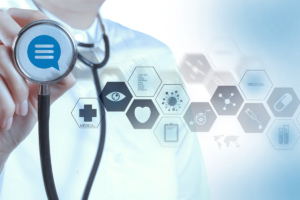
Whom to entrust medical translation to?
Do medical texts always have to be translated by a doctor? Can a linguist take on the translation of medical documents? These questions inevitably arise for those who seek to choose a competent medical translator filipino to english. In this article we will try to understand and find answers to these questions.
Let’s start with the fact that medical translation is a very broad concept. It combines texts of different directions: the manual for the operation of medical equipment, the personal outpatient card of the patient, clinical trials of a new drug, AND (analytical regulatory documentation) and many others. These texts have many differences, but they are united by the high responsibility of the translator for the results of their work. Consider separately all types of medical texts in order to determine the optimal performer for each task.
Descriptions of medical equipment and devices
Such translations are in demand by manufacturers and suppliers of medical equipment. An error in translation in this case can harm both consumers and the company’s reputation. Such texts are replete with technical phrases related to the mechanical, electrical or electronic parts of the device (sensors, chambers, bearings, generators, brackets, controller boards, interface elements), the meaning of which can only be adequately conveyed in translation by a technical translator-engineer. Example: “This system uses a sensor assembly consisting of a pair of matched thermistor sensors in a housing. One of the sensors is sealed in a nitrogen filled housing and provides the 0 to 1 VDC reference signal for the gas control board”. A technical translator will translate “sensor” as “sensor” (not “sensor”), while in medicine the adjective “sensory” is often used, referring to the sense organs, which can be confusing for a medical translator. The translator must understand the correct order of logical relationships between the words “nitrogen filled housing” – “a body filled with nitrogen”. Well, what is “0 to 1 VDC reference signal”, a non-technical translator will not understand this at all.
However, technical descriptions and instructions for working with medical equipment also contain many clinical details that only a person with a medical education can understand, for example: “HIV fourth generation ELISA allows the simultaneous determination of HIV p24 antigens and HIV-1/HIV- 2 antibodies reducing therefore the diagnostic window and allowing an early diagnosis of acute HIV infection. Antigens representing epitopes of HIV-1 gp41 and HIV-2 gp36 are coated onto microplate wells together with monoclonal antibodies against HIV p24” antibodies to HIV-1/HIV-2, thereby reducing the “diagnostic gap” and enabling early diagnosis of the acute phase of HIV infection. microplate cells together with monoclonal antibodies against the HIV p24 antigen”) – you must admit that this text cannot be translated without knowledge of immunology!
So, the optimal performer is one who simultaneously owns both technical and medical topics. Since medical engineers (with knowledge of a foreign language!) are rare, we can offer this option: work in a pair of engineer-medical.
Pharmaceutical texts
Such transfers are in demand by pharmaceutical companies that produce new drugs and expand their market presence. To register a drug, you must submit a registration dossier of this drug to the state regulatory authority. This procedure must be carried out in all countries where it is planned to sell the drug. The selection of a competent contractor is very important, because a mistake can result in financial losses for the customer, a delay in the release of a new drug on the market, and other unpleasant consequences. If distorted information gets into the annotation, then the health of consumers may also suffer.
Among the entire set of documents included in the registration dossier of a medicinal product, there is a large proportion of documentation related to clinical trials. These are purely medical texts and should be translated by a doctor who specializes in this field.
However, a large part of the dossier consists of pharmacopoeial articles and chemical-analytical texts. These are purely laboratory descriptions of analytical procedures with substances, for example: “Mobile phase: Acetonitrile-Water (4:6), adjust the pH of 3.0 with phosphoric acid” 6 parts of water, adjusted to pH 3.0 with phosphoric acid). With such a translation, a chemist will cope much better than a physician.
Private medical records
These include outpatient cards, certificates, extracts, epicrises, diagnoses, conclusions, test results, and so on. The translation of these documents is in demand by private clients. As a rule, such transfers are needed to start treatment abroad or to provide the results of a foreign examination/treatment in the home country. In this case, the health of a particular person depends on the professionalism of the translator.
The translation of personal documents has its own nuances. Doctors often write such documents by hand, so it is often difficult for a non-specialist to parse them. Why can a doctor understand the handwriting of his colleague? Because his knowledge and experience allow him to guess from the context and from the distinguishable “scraps” of words what is being said. Therefore, the translator of such documents should be “in the subject.”
Another difficulty is abbreviations and abbreviations. In addition to the generally accepted ones (among them there are those that are understandable even to a non-specialist, for example, AIDS, HIV), there are also those that are used only in individual countries. The insidiousness of the situation is that such abbreviations may not be reflected in reference books. Therefore, the translator needs to be familiar with the medical texts of the country in which the document was written.
Of course, you can try to get around these difficulties: ask the clinic to type the text on a computer and decipher all the abbreviations. Then this work will become more accessible to a translator without a medical education. It is theoretically possible to give the text of a medical translation to a linguist if we are talking about a relatively simple job – for example, translating a prescription. But even in this case it is better that the linguist consults with a doctor or the doctor proofreads the finished translation. Still, the best option is to entrust the translation to a specialist with a medical education.
So, it would be wrong to state indiscriminately that only specialists with a medical education are suitable for translating medical texts. A translation agency that cares about quality and values its reputation selects a translator for a specific task of the customer. At the same time, we see that translators who have only a linguistic education in their assets have almost nothing to do in medical translation – with the exception of working in tandem with a doctor or on simple orders, provided that all the mentioned terms and abbreviations can be found in dictionaries. Medical translation is too responsible a matter to be entrusted to non-specialists.
